Contents
1 Revision history
2 About this document
2.1 Peripheral naming and abbreviations
2.2 Register tables
2.2.1 Fields and values
3 System overview
3.1 Summary
3.2 Block diagram
3.3 System blocks
3.3.1 ARM® Cortex™-M0
3.3.2 2.4 GHz radio
3.3.3 Power management
3.3.4 PPI system
3.3.5 Debugger support
4 CPU
5 Memory
5.1 Functional description
5.1.1 Memory categories
5.1.2 Memory types
5.1.3 Code memory
5.1.4 Random Access Memory
5.1.5 Peripheral registers
5.2 Instantiation
6 Non-Volatile Memory Controller (NVMC)
6.1 Functional description
6.1.1 Writing to the NVM
6.1.2 Writing to User Information Configuration Registers
6.1.3 Erase all
6.1.4 Erasing a page in code region 1
6.1.5 Erasing a page in code region 0
6.2 Register Overview
6.3 Register Details
7 Factory Information Configuration Registers (FICR)
7.1 Functional description
7.2 Override parameters
7.3 Register Overview
7.4 Register Details
8 User Information Configuration Registers (UICR)
8.1 Functional description
8.2 Register Overview
8.3 Register Details
9 Memory Protection Unit (MPU)
9.1 Functional description
9.1.1 Inputs
9.1.2 Output
9.1.3 Output decision table
9.1.4 Exceptions from table
9.1.5 NVM protection blocks
9.2 Register Overview
9.3 Register Details
10 Peripheral interface
10.1 Functional description
10.1.1 Peripheral ID
10.1.2 Bit set and clear
10.1.3 Tasks
10.1.4 Events
10.1.5 Shortcuts
10.1.6 Interrupts
11 Debugger Interface (DIF)
11.1 Functional description
11.1.1 Normal mode
11.1.2 Debug interface mode
11.1.3 Resuming normal mode
12 Power management (POWER)
12.1 Functional description
12.1.1 Power supply
12.1.2 Internal LDO setup
12.1.3 DC/DC converter setup
DC/DC efficiency
12.1.4 Low voltage mode setup
12.1.5 System OFF mode
12.1.6 Emulated System OFF mode
12.1.7 System ON mode
Sub power modes
12.1.8 Power supply supervisor
12.1.9 Power-fail comparator
12.1.10 RAM blocks
12.1.11 Reset
12.1.12 Power-on reset
12.1.13 Pin reset
12.1.14 Wakeup from OFF mode reset
12.1.15 Soft reset
12.1.16 Watchdog reset
12.1.17 Brown-out reset
12.1.18 Retained registers
12.1.19 Reset behavior
12.2 Register Overview
12.3 Register Details
13 Clock management (CLOCK)
13.1 Functional description
13.1.1 HFCLK clock controller
13.1.2 LFCLK clock controller
13.1.3 Calibrating the 32.768 kHz RC oscillator
13.1.4 Calibration timer
13.2 Register Overview
13.3 Register Details
14 General-Purpose Input/Output (GPIO)
14.1 Functional description
14.2 Register Overview
14.3 Register Details
15 GPIO tasks and events (GPIOTE)
15.1 Functional description
15.1.1 Pin events and tasks
15.1.2 Port event
15.1.3 Task and events pin configuration
15.2 Register Overview
15.3 Register Details
16 Programmable Peripheral Interconnect (PPI)
16.1 Functional description
16.1.1 Pre-programmed channels
16.2 Register Overview
16.3 Register Details
17 2.4 GHz Radio (RADIO)
17.1 Functional description
17.1.1 EasyDMA
17.1.2 Packet configuration
17.1.3 Maximum packet length
17.1.4 Address configuration
17.1.5 Received Signal Strength Indicator (RSSI)
17.1.6 Data whitening
17.1.7 CRC
17.1.8 Radio states
17.1.9 Maximum consecutive transmission time
17.1.10 Transmit sequence
17.1.11 Receive sequence
17.1.12 Interframe spacing
17.1.13 Device address match
17.1.14 Bit counter
17.1.15 Bluetooth trim values
17.2 Register Overview
17.3 Register Details
18 Timer/counter (TIMER)
18.1 Functional description
18.1.1 Capture
18.1.2 Compare
18.1.3 Task delays
18.1.4 Task priority
18.2 Register Overview
18.3 Register Details
19 Real Time Counter (RTC)
19.1 Functional description
19.1.1 Clock source
19.1.2 Resolution versus overflow and the PRESCALER
19.1.3 The COUNTER register
19.1.4 Overflow features
19.1.5 The TICK event
19.1.6 Event Control feature
19.1.7 Compare feature
19.1.8 TASK and EVENT jitter/delay
19.1.9 Reading the COUNTER register
19.2 Register Overview
19.3 Register Details
20 Watchdog timer (WDT)
20.1 Functional description
20.1.1 Reload criteria
20.1.2 Temporarily pausing the watchdog
20.1.3 Watchdog reset
20.2 Register Overview
20.3 Register Details
21 Random Number Generator (RNG)
21.1 Functional description
21.1.1 Digital error correction
21.1.2 Speed
21.2 Register Overview
21.3 Register Details
22 Temperature sensor (TEMP)
22.1 Functional description
22.2 Register Overview
22.3 Register Details
23 AES Electronic Codebook mode encryption (ECB)
23.1 Functional description
23.1.1 EasyDMA
23.1.2 ECB Data Structure
23.1.3 Shared resources
23.2 Register Overview
23.3 Register Details
24 AES CCM Mode Encryption (CCM)
24.1 Functional description
24.1.1 Encryption
24.1.2 Decryption
24.1.3 AES CCM and RADIO concurrent operation
24.1.4 Encrypting packets on-the-fly in radio transmit mode
24.1.5 Decrypting packets on-the-fly in radio receive mode
24.1.6 CCM data structure
24.1.7 EasyDMA and ERROR event
24.1.8 Shared resources
24.2 Register Overview
24.3 Register Details
25 Accelerated Address Resolver (AAR)
25.1 Functional description
25.1.1 Resolving a resolvable address
25.1.2 Use case example for chaining RADIO packet reception with resolving addresses with the AAR
25.1.3 IRK data structure
25.1.4 EasyDMA
25.1.5 Shared resources
25.1.6 Register Overview
25.1.7 Register Details
26 Serial Peripheral Interface (SPI) Master
26.1 Functional description
26.1.1 SPI master mode pin configuration
26.1.2 Shared resources
26.1.3 SPI master transaction sequence
26.2 Register Overview
26.3 Register Details
27 SPI Slave (SPIS)
27.1 Pin configuration
27.2 Shared resources
27.3 EasyDMA
27.4 SPI slave operation
27.5 Register Overview
27.6 Register Details
28 I2C compatible Two Wire Interface (TWI)
28.1 Functional description
28.2 Master mode pin configuration
28.3 Shared resources
28.4 Master write sequence
28.5 Master read sequence
28.6 Master repeated start sequence
28.7 Register Overview
28.8 Register Details
29 Universal Asynchronous Receiver/Transmitter (UART)
29.1 Functional description
29.2 Pin configuration
29.3 Shared resources
29.4 Transmission
29.5 Reception
29.6 Suspending the UART
29.7 Error conditions
29.8 Using the UART without flow control
29.9 Parity configuration
29.10 Register Overview
29.11 Register Details
30 Quadrature Decoder (QDEC)
30.1 Functional description
30.1.1 Pin configuration
30.1.2 Sampling and decoding
30.1.3 LED output
30.1.4 Debounce filters
30.1.5 Accumulators
30.1.6 Output/input pins
30.2 Register Overview
30.3 Register Details
31 Analog to Digital Converter (ADC)
31.1 Functional description
31.1.1 Set input voltage range
Voltage divider
31.1.2 Using a voltage divider to lower voltage
31.1.3 Input impedance
31.1.4 Configuration
31.1.5 Usage
31.1.6 One-shot / continuous operation
31.1.7 Pin configuration
31.1.8 Shared resources
31.2 Register Overview
31.3 Register Details
32 Low Power Comparator (LPCOMP)
32.1 Functional description
32.2 Pin configuration
32.3 Shared resources
32.4 Register Overview
32.5 Register Details
33 Software Interrupts (SWI)
33.1 Functional description
33.2 Register Overview

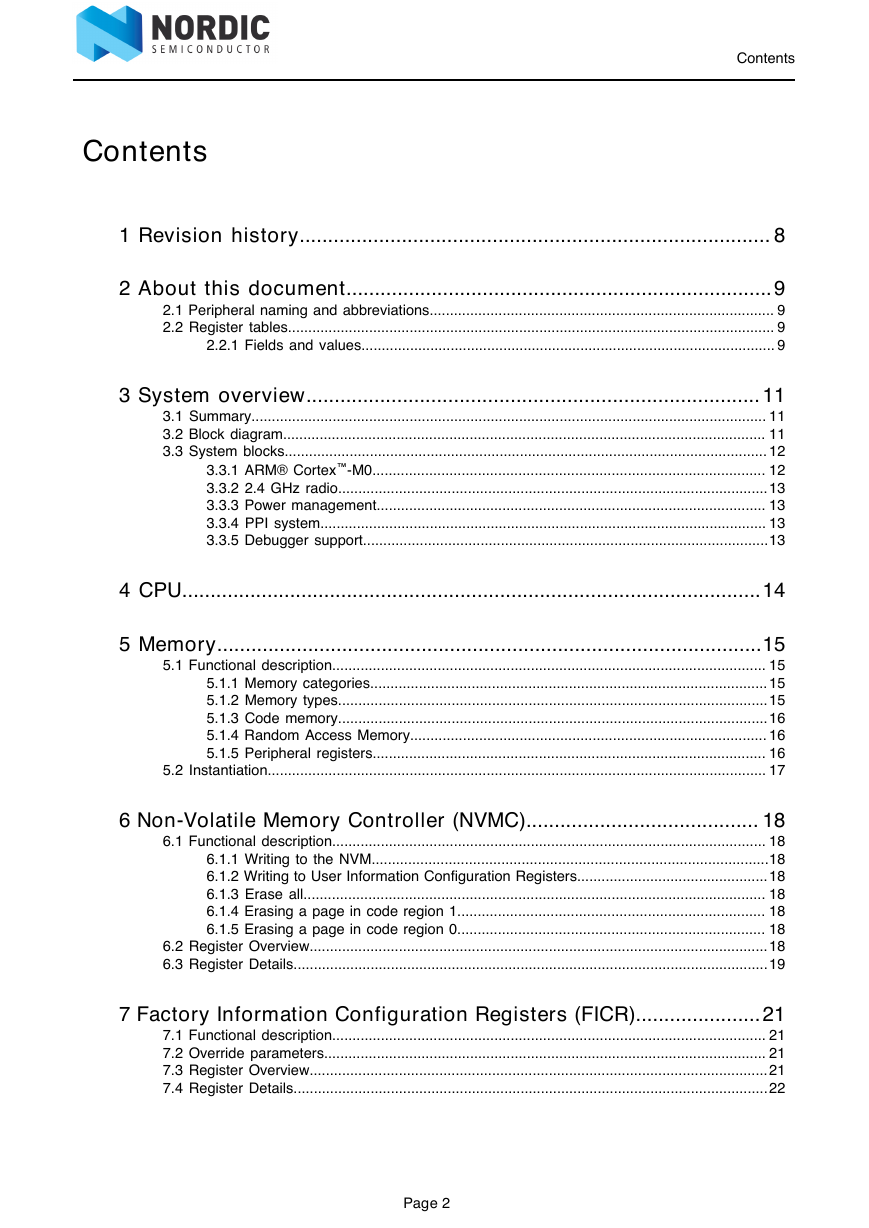
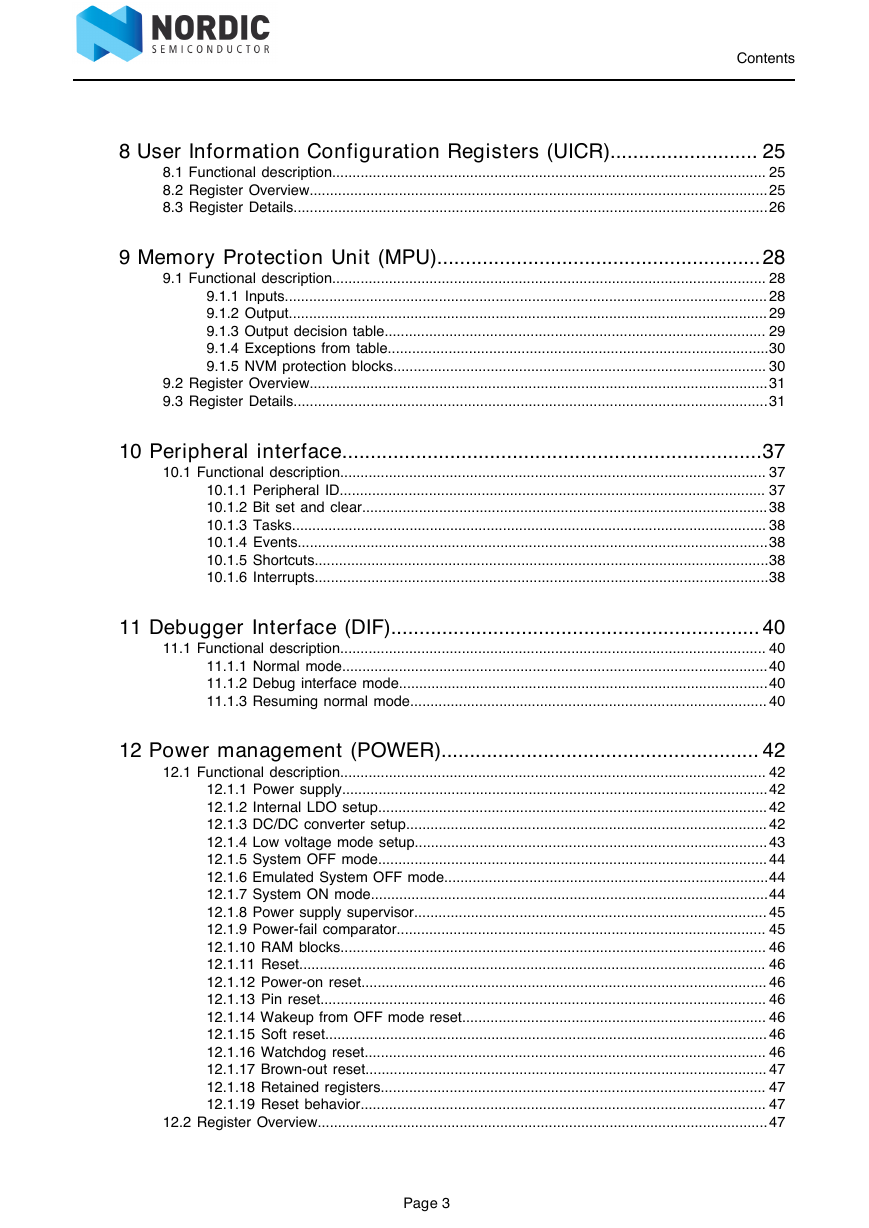
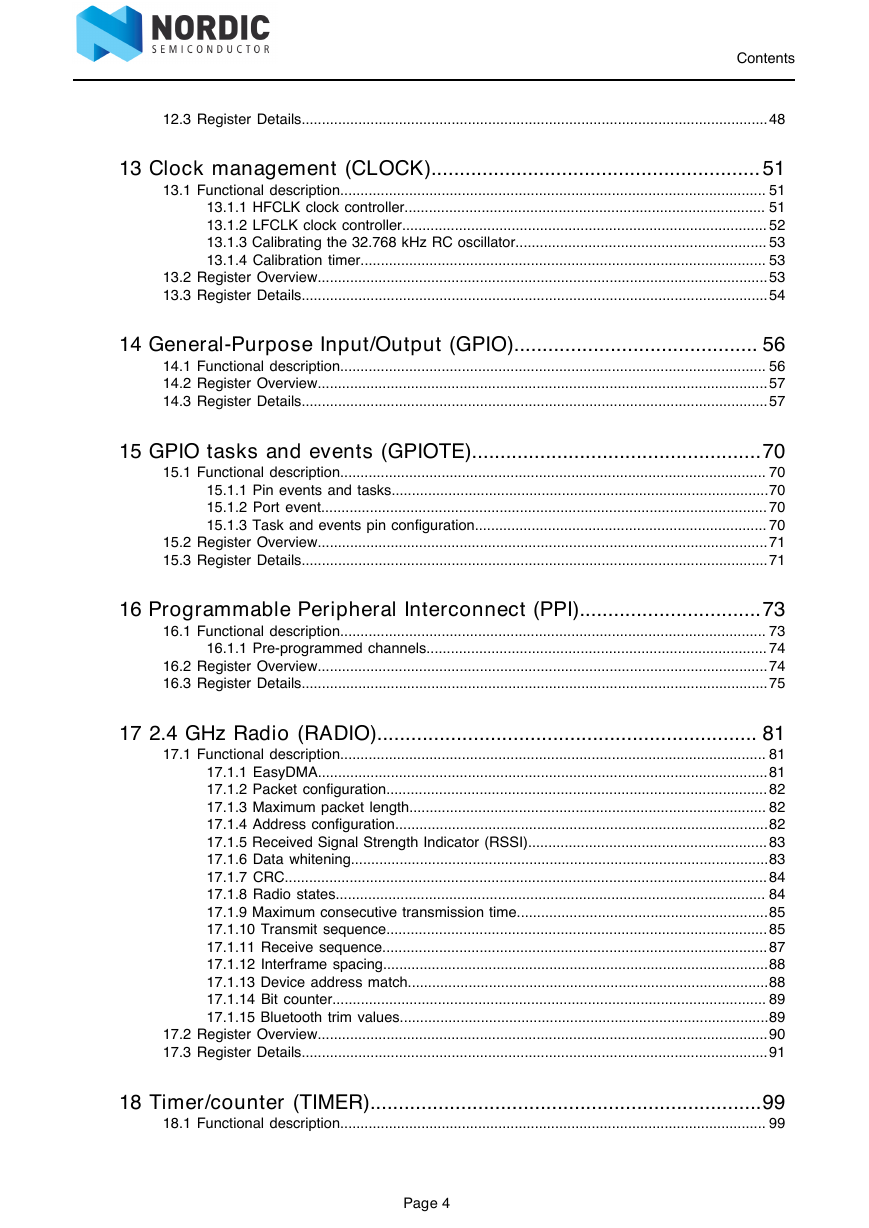
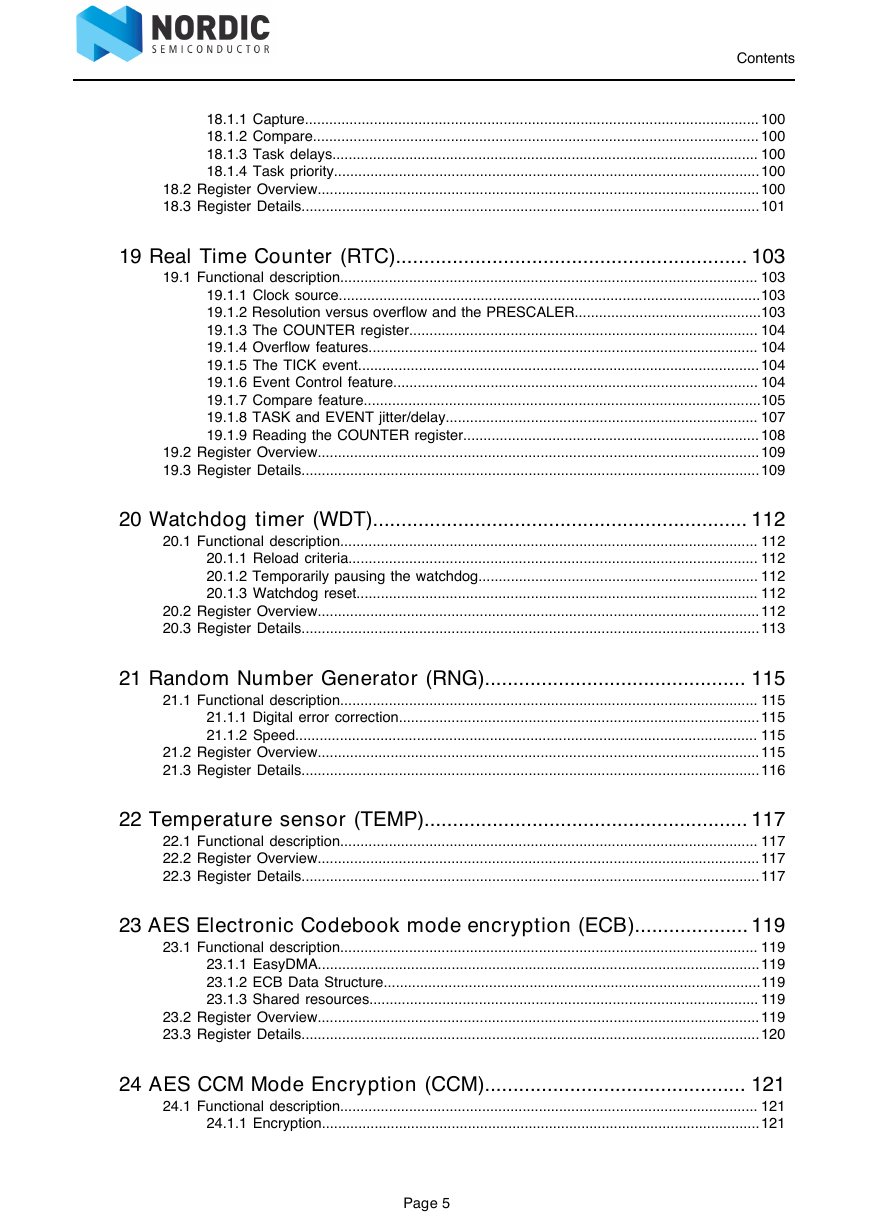


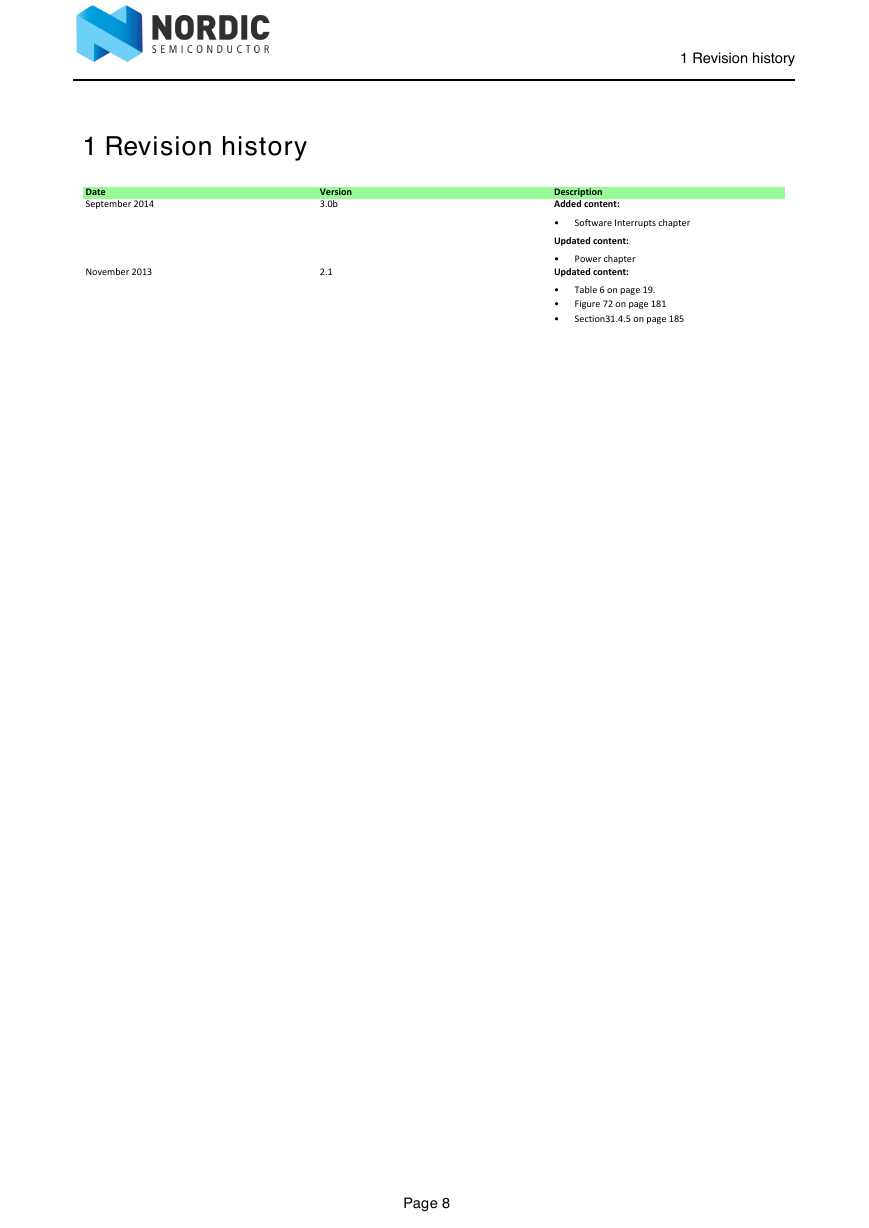








 2023年江西萍乡中考道德与法治真题及答案.doc
2023年江西萍乡中考道德与法治真题及答案.doc 2012年重庆南川中考生物真题及答案.doc
2012年重庆南川中考生物真题及答案.doc 2013年江西师范大学地理学综合及文艺理论基础考研真题.doc
2013年江西师范大学地理学综合及文艺理论基础考研真题.doc 2020年四川甘孜小升初语文真题及答案I卷.doc
2020年四川甘孜小升初语文真题及答案I卷.doc 2020年注册岩土工程师专业基础考试真题及答案.doc
2020年注册岩土工程师专业基础考试真题及答案.doc 2023-2024学年福建省厦门市九年级上学期数学月考试题及答案.doc
2023-2024学年福建省厦门市九年级上学期数学月考试题及答案.doc 2021-2022学年辽宁省沈阳市大东区九年级上学期语文期末试题及答案.doc
2021-2022学年辽宁省沈阳市大东区九年级上学期语文期末试题及答案.doc 2022-2023学年北京东城区初三第一学期物理期末试卷及答案.doc
2022-2023学年北京东城区初三第一学期物理期末试卷及答案.doc 2018上半年江西教师资格初中地理学科知识与教学能力真题及答案.doc
2018上半年江西教师资格初中地理学科知识与教学能力真题及答案.doc 2012年河北国家公务员申论考试真题及答案-省级.doc
2012年河北国家公务员申论考试真题及答案-省级.doc 2020-2021学年江苏省扬州市江都区邵樊片九年级上学期数学第一次质量检测试题及答案.doc
2020-2021学年江苏省扬州市江都区邵樊片九年级上学期数学第一次质量检测试题及答案.doc 2022下半年黑龙江教师资格证中学综合素质真题及答案.doc
2022下半年黑龙江教师资格证中学综合素质真题及答案.doc